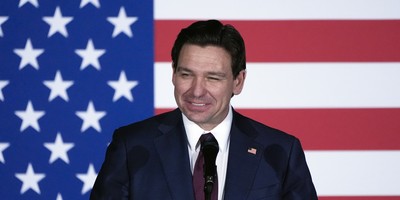Yes, there has been no entity more central to inflating the housing bubble and rescuing banks during the crisis than the Federal Reserve. At the heart of these errors has been a departure from the Fed's mandate of keeping credit and money growth in line with the real economy.
Much is made of the Fed's "dual mandate" of promoting price stability and full employment, but a read of the Fed's responsibilities, in Section 2A of the Federal Reserve Act, requires the Fed to maintain "growth of the monetary and credit aggregates commensurate with the economy's long run potential to increase production, so as to promote effectively the goals of maximum employment, stable prices, and moderate long-term interest rates." Encouraging a bubble in the housing market is the exact opposite of the Fed's mandate. Yet from 2002 to 2005, the real federal funds rate was negative. Paying people to borrow money for three years is a recipe for disaster.
Using the Fed balance sheet to absorb the losses that should have been borne by creditors and shareholders is not conducting monetary policy.
Beyond the Fed's role in creating the housing bubble was its response to the crisis. The Fed's role as lender of last resort is to provide liquidity to banks experiencing short term financing needs. No degree of liquidity, however, can cover up a firm's insolvency. The basic problem at firms such as Bear Stearns, Lehman Brothers, AIG and Fannie Mae was that their liabilities were greater than their assets. This is not a liquidity problem, but one of solvency. Using the Fed balance sheet to absorb the losses that should have been borne by creditors and shareholders is not conducting monetary policy. It is fiscal policy, on a massive scale.
The Fed's purchase of $1 trillion in mortgage-backed securities is no different than the original proposed purpose of the TARP. And while I opposed the TARP, one can at least say it was passed by Congress, where we could observe each member's vote and hold them accountable. The Fed has engaged in the same actions, yet being unelected bureaucrats who regularly claim "independence", are beyond public accountability. At a basic level, if the TARP is fiscal policy when passed by Congress, how can the same actions count as monetary policy when performed by the Fed? They do not and cannot. Defenders of the Fed constantly invoke another Great Depression or that it would have been worse. Maybe they've missed just exactly how bad it is and has been. To say we avoided another Great Depression is empty conjecture. We had a nasty housing boom and bust. Bailing out AIG wasn't going to change that. It is long past time for the Fed to return to a focus solely on price stability and end its excursions into fiscal policy and the constant inflating of asset bubbles.
Recommended
Mark A. Calabria, Ph.D. is director of financial regulation studies at the Cato Institute.
This article appeared in US News and World Report on October 21, 2011.
























Join the conversation as a VIP Member